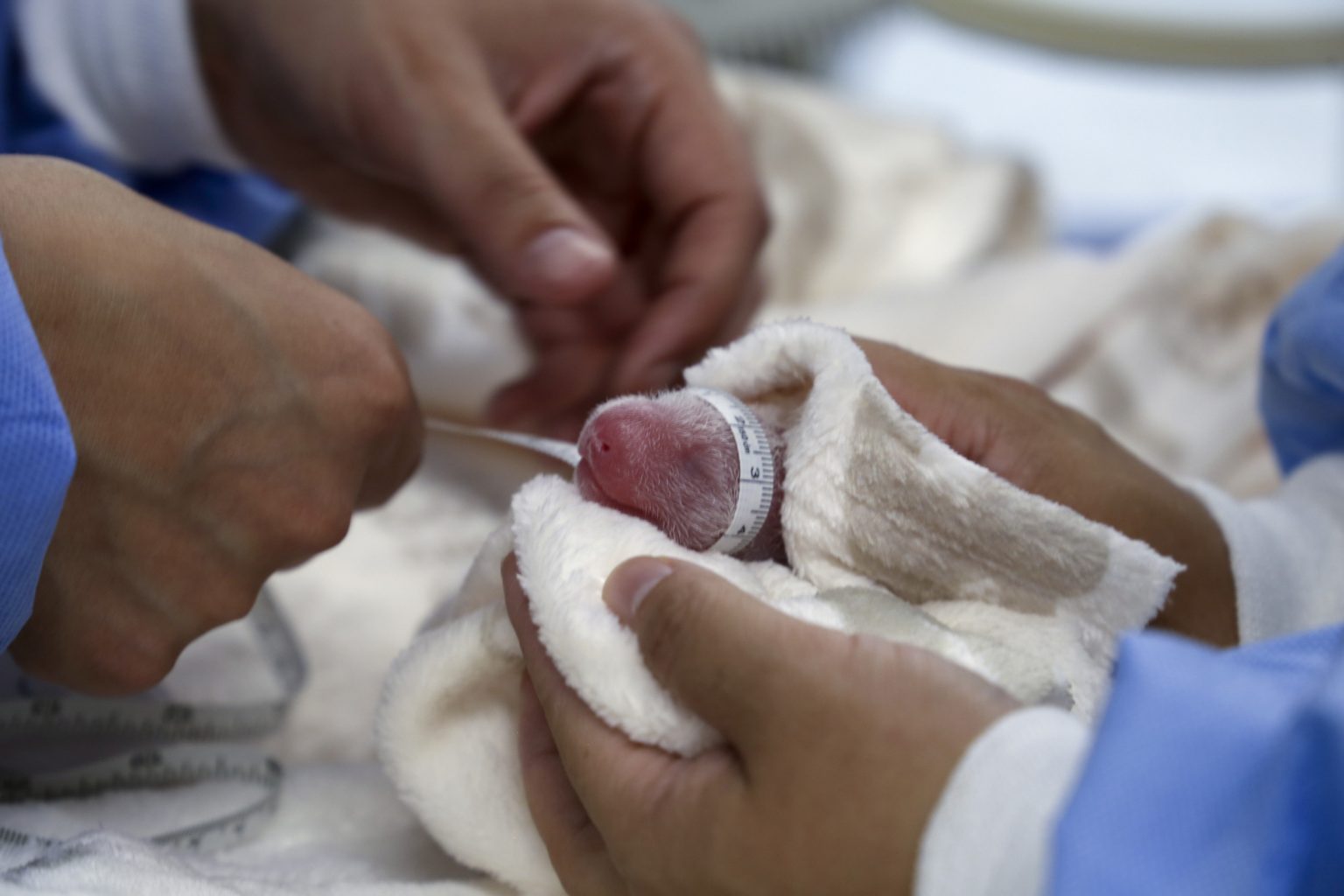Germany’s Berlin Zoo recently welcomed twin panda cubs born to 11-year-old panda mother Meng Meng. The cubs were born weighing in at just 6 ounces and 4.8 ounces and measuring at 5 and a half inches in length. A few days after their birth, officials announced that the cubs were thriving, with the firstborn cub reaching 180 grams in weight and the second cub weighing around 145 grams. Both cubs have increased in weight since birth, which is seen as a positive sign of their health. The gender of the twins has not yet been confirmed.
Panda cubs are born in a vulnerable state, being deaf, blind, and pink in color with their signature black and white fur developing later. At the Berlin Zoo, officials remain cautiously optimistic as the cubs approach the two-week mark, a crucial period where panda cub mortality rates are high due to their undeveloped immune systems. In a natural setting, one of the twins might not have survived as giant pandas typically raise only one cub when twins are born. The zoo has enlisted the help of specialists from China’s Chengdu Research Base of Giant Panda Breeding and implemented a careful rotation system where one twin stays with the mother while the other is placed in an incubator provided by a local hospital.
The Berlin Zoo highlighted the importance of maintaining the population of giant pandas, stating that without protective measures, the species would likely be extinct. Giant pandas are primarily loaned to zoos worldwide under commercial agreements, with around 1,800 living in the wild in China and several hundred in captivity globally. Meng Meng and her male companion, Jiao Qing, arrived at the Berlin Zoo in 2017 as part of China’s “panda diplomacy” program. In 2019, Meng Meng gave birth to twin cubs Pit and Paule, who became star attractions before being flown to China in 2022. The latest panda twins will not be on public display yet, but visitors can see Jiao Qing, who does not play a role in raising the cubs.
The Berlin Zoo has been providing regular updates on the panda twins’ progress, detailing their delicate cycle of nursing and bonding. The cubs are taking turns to feed every hour, indicating their health and growth. The zoo’s intervention and careful monitoring have been crucial in ensuring the well-being of the twins, especially during the critical early stages of their development. The upcoming weeks will be crucial as the cubs continue to grow and strengthen, with the zoo’s team dedicated to providing the best possible care for the newborn pandas.
The successful birth of the panda twins at the Berlin Zoo showcases the ongoing conservation efforts to protect the endangered species. Through partnerships with research institutions and global conservation programs, zoos like Berlin are playing a vital role in preserving the future of giant pandas. The public’s interest and support for these iconic animals further highlight the importance of continued conservation efforts to ensure the survival of threatened species like the giant panda. As the panda twins continue to thrive and grow under the care of dedicated zookeepers and experts, their story serves as a beacon of hope for the future of these beloved creatures.


